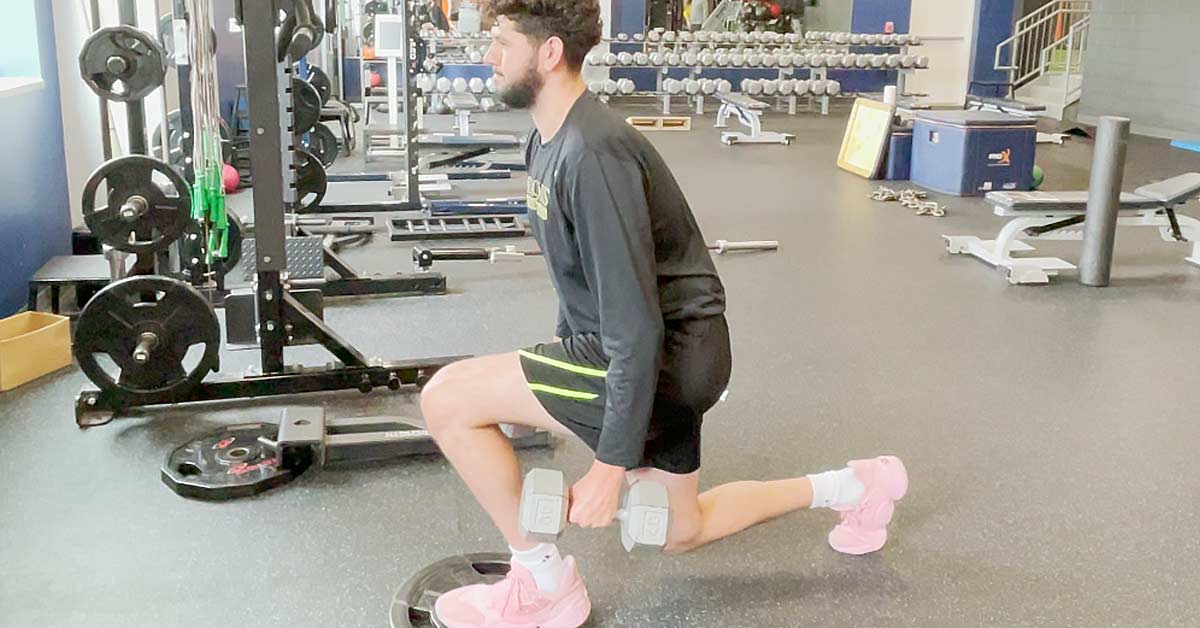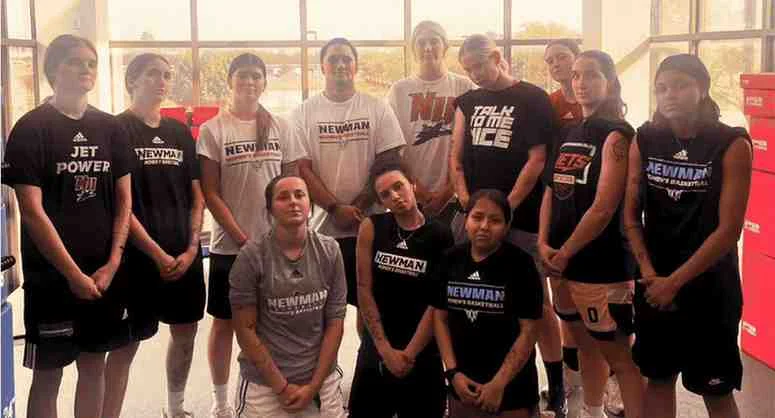The beauty of the strength and conditioning field is that it is still a relatively new industry. Auto mechanics can be traced back to the 1800s. Accountants can be traced back to the 1600s. School teachers can be traced back to the 1400s. Strength coaches? We didn’t officially even become a “real job” until the 1960s.
As the industry continues to grow and evolve, it’s certainly heading in the right direction—despite what you might scroll past on social media.
With this growth comes countless learning opportunities. Over the years, I’ve spent a ton of time working in the basketball community; specifically with extremely tall men and women. How I initially believed I should train these tall basketball players versus what I believe in now has drastically changed. Addressing these misconceptions—and the realities behind them—could help coaches continue to change the industry moving forward. So, here are some common misconceptions on training bigs in basketball.
Tall = Immobile
Right off the bat, myth numero uno is that tall equals immobile. Sure, height may come with some additional mobility challenges when you’re a 7-footer, but the potential for mobility and quality movement is always there.
The misconception that tall players automatically lack mobility often leads coaches to assume certain lifts will be hazardous for the athlete. In some instances, doing this takes away an opportunity for the athlete to actually train hard and get results.
Video 1. Here’s an example of a 7-footer performing a deficit reverse lunge, training through full range of motion and then some.
I am 100% in support of modifying to a regressed exercise to fit the needs of the athlete, but only when it truly is the most beneficial variation for the athlete. Telling a 7-footer not to squat deep to protect their knees—when they have the full range of motion and mobility needed to do so competently—is not a positive exercise modification in any way.
Video 2. In this example, a 6’9 athlete shows some incredible hip mobility and lateral control on display.
You could probably save a lot of time and say all bigs are going to half squat, deadlift from blocks, and bench press to boards and be right about 50% of the time. Or, you could meet the individual needs of each athlete, spend a little bit more time programming, and be right more like 90% of the time.
I’m going to recommend doing the latter! I think a lot of big athletes have outstanding mobility and we should train all available ranges of motion within reason.
I think a lot of big athletes have outstanding mobility and we should train all available ranges of motion within reason, says @JustinOchoa317. Share on XThin = Weak
Many of these taller athletes are naturally thin and lean. They have long levers and sometimes it can be a challenge for them to keep weight on. A cop-out statement from a coach would be “I need him/her to get stronger!” simply because the athlete has a thin frame.
But is that really the case? Do they really need strength? Thin definitely doesn’t equal weakness. I think relative strength is a vital metric that can truly showcase just how strong some of these thin frames can be.
Many times, just comparing different athletes’ lifting numbers doesn’t give you a true apples-to-apples comparison. A 230-pound athlete should be able to—and is likely going to—lift significantly more than a 180-pound athlete. So, relative strength can come into play here to see who is strong for their frame.
Just comparing different athletes’ lifting numbers doesn’t give you a true apples-to-apples comparison, says @JustinOchoa317. Share on X
Video 3. This particular athlete did indeed need to modify his deadlift variation for technique purposes, but still crushed a 425-lb trap bar deadlift at 6’11, 230lbs.
Relative strength refers to the amount of strength an athlete has compared to their bodyweight. This can be applied in weight lifting by monitoring if the athlete is hitting X amount of reps in an exercise loaded to the equivalent of their bodyweight, lifting their actual body weight with callisthenic exercises such as push-ups and pull-ups, or lifting X percent of their body weight for a one-rep max on a given lift.
To dive even deeper, we could consider power to bodyweight ratio in the same conversation. We use the 1080 Sprint to measure this using a 20m sprint at 1kg. We take the athlete’s peak power during that sprint (w) divided by the athlete’s bodyweight (kg) to get their power: bodyweight ratio. Typically, I would like to see this metric at 3.5 (w/kg) or higher.
In addition to those two factors, I think tall athletes have a valid claim for doing more total work. All other things considered equal—load, reps, and movement velocity—an athlete performing the exercise through more range of motion has a greater total workload.
The moral of the story is that we can’t discredit our bigs and blindly label them weak due to their appearance. Above are some ways to get a truer gauge on just how strong—or weak—they really are.
We can’t discredit our bigs and blindly label them weak due to their appearance, says @JustinOchoa317. Share on XBig = Slow
The last, and probably biggest, misconception of them all is that big equals slow. One of the most prevalent changes to the game of basketball is the evolution of the power forward and center positions.
What used to be hook shots and hanging out in the paint all game is now running the floor, jumping out of the gym, and being able to score from all three levels of the court.
We’re also in an era of pretty much position-less basketball. Look at the last 10 years of MVP award winners in the NBA. You’ll see guys like LeBron James, Giannis Antetokounmpo, Kevin Durant, and Nikola Jokic. LeBron is the shortest of those 4 at 6’9, they’re all averaging nearly a triple double and playing all five positions at any given time during a game. The demands of the sport have changed, and the athletes have evolved with it.
The demands of basketball have changed, and the athletes have evolved with it, says @JustinOchoa317. Share on XIt’s the same in the WNBA. The past 5 WNBA MVP award winners—Jonquel Jones, A’ja Wilson, Elena Delle Donne, Breanna Stewart, and Sylvia Fowles—are all between 6’4 and 6’6 and can stretch the floor to bring a level of versatility never before seen in the league.
Sometimes a large athlete might appear slow, especially compared to smaller quick athletes, but one thing the bigger athletes have on their side is stride length on a relatively small playing surface.
Speed is often presented as distance divided by time. In this equation, and in this specific sport played in very close quarters, bigs can actually prove to be pretty fast with the right mix of athleticism, basketball IQ, and spacing on the floor.
All of this carries over to how we train. Again, we never want to take away an opportunity for the athlete to train hard, so training our big basketball players for speed is going to pay huge dividends for them on the court.
Video 4. This is a really solid rep by a 6’10 athlete, sprinting against 2.5% BW for 20m on the 1080 Sprint.
Of course, coaches can make speed programming decisions based on the demands of the position and sport, but let’s not forget that sometimes simply the neurological benefits of training at high velocities are going to give you the most bang for your buck.
Sometimes simply the neurological benefits of training at high velocities are going to give you the most bang for your buck, says @JustinOchoa317. Share on XThe Bottom Line
I absolutely love where the relationship between basketball players and the weight room is trending. More and more, we’re seeing strength and conditioning becoming embedded into the culture of basketball—much like it already has been for decades in football.
Athletes are understanding the value of a well-rounded performance plan and training outside just the skills of the sport. This has had a major impact on that game and continues to drive the sport forward as we’re seeing literally the best athletes of all time competing now at every single level of the sport.
To bring it all home, just remember that when it comes to big hoopers:
- Tall ≠ Immobile
- Thin ≠ Weak
- Big ≠ Slow






